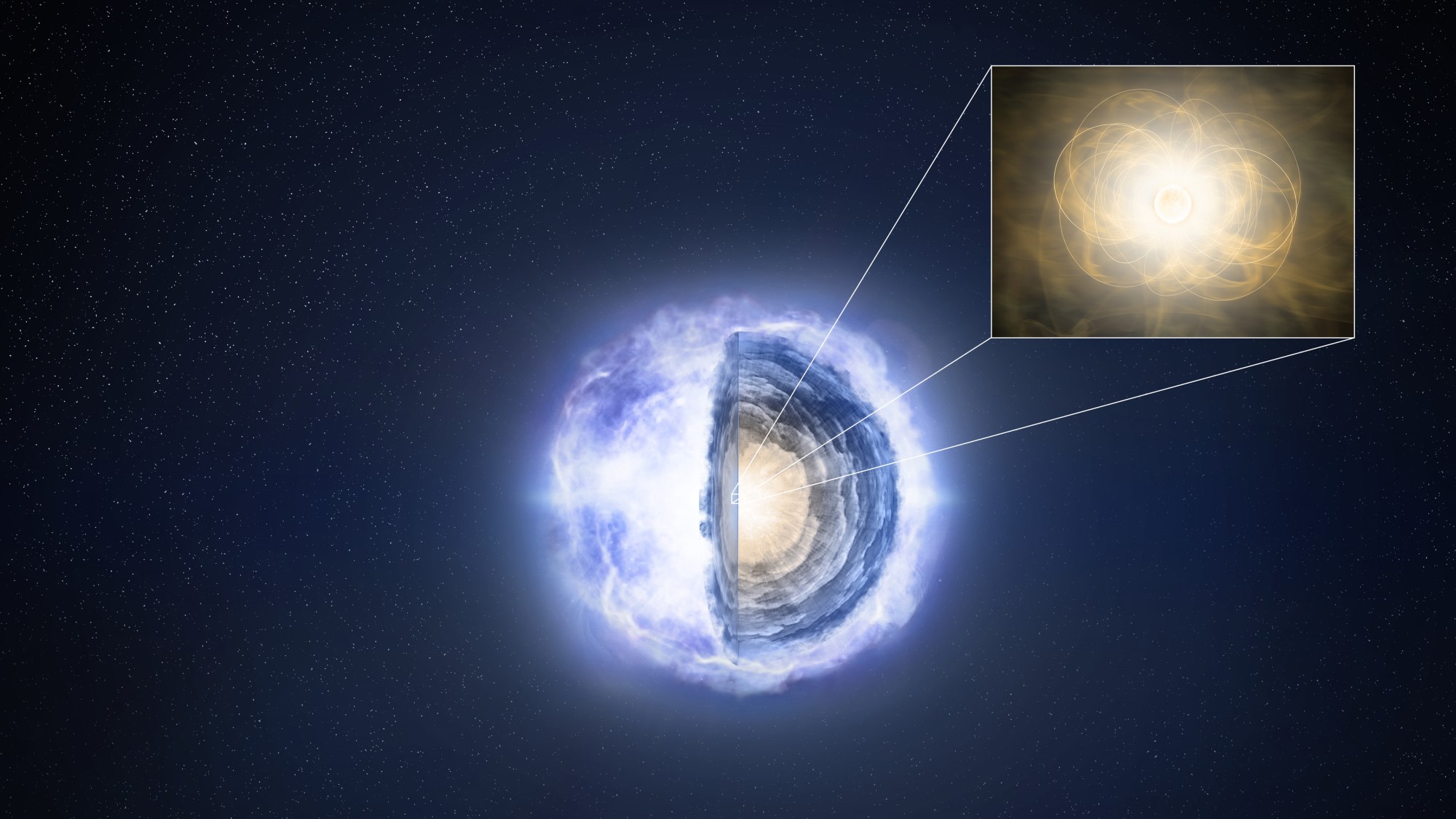'Emerging super Crab' might be the most powerful pulsar ever discovered
The neutron star is in its infancy, between 14 and 80 years old.

Astronomers have discovered what might be the most powerful pulsar ever observed.
They suspect the newfound object, VT 1137-0337, is a pulsar wind nebula, a neutron star that accelerates nearby charged particles at close to the speed of light.
The astronomers spotted the pulsar in a series of images from the Very Large Array Sky Survey (VLASS), a project of the National Radio Astronomy Observatory, which is conducting three full-sky scans from the Very Large Array (VLA) near Socorro, New Mexico, over the course of seven years. Researchers can analyze these images to search for transient objects such as supernovas and gamma-ray bursts.
Related: Weird nearby gamma-ray burst defies expectations
For this new work, two Caltech astronomers — graduate student Dillon Dong and his doctoral adviser, Gregg Hallinan — compared a VLASS observation from January 2018 with one taken by the VLA in 1998 as part of the VLA's Faint Images of the Radio Sky at Twenty-centimeters survey.
They discovered 20 transient objects in the newer image that did not exist in the older image. One object in particular, VT 1137-0337, located in a dwarf galaxy 395 million light-years from Earth, caught their eye.
"This one stood out because its galaxy is experiencing a burst of star formation, and also because of the characteristics of its radio emission," Dong said in a statement.
Get the Space.com Newsletter
Breaking space news, the latest updates on rocket launches, skywatching events and more!

That radio emission shows similarities to a known pulsar wind nebula — the Crab Nebula in the constellation Taurus — but it's much more powerful. "The object we have found appears to be approximately 10,000 times more energetic than the Crab, with a stronger magnetic field," Dong said. "It likely is an emerging 'super Crab.'"
Emerging is right: VT 1137-0337 is extremely young by astronomical standards. Hallinan estimates it's between 14 and 80 years old, which would make it one of the youngest neutron stars ever observed.
There is a chance, however, that this energetic object is not a nebula wind pulsar at all. Instead, it might be a magnetar, a neutron star with an extremely powerful magnetic field that might be the source of mysterious flashes called fast radio bursts.
"In that case, this would be the first magnetar caught in the act of appearing, and that, too, is extremely exciting," Dong said.
The researchers will continue to study VT 1137-0337, monitoring it via subsequent VLASS observations. So far, the object has shown up in images each year since 2018.
Dong and Hallinan presented their research at the 240th meeting of the American Astronomical Society, in Pasadena, California.
Follow Stefanie Waldek on Twitter @StefanieWaldek. Follow us on Twitter @Spacedotcom and on Facebook.
Join our Space Forums to keep talking space on the latest missions, night sky and more! And if you have a news tip, correction or comment, let us know at: community@space.com.

Space.com contributing writer Stefanie Waldek is a self-taught space nerd and aviation geek who is passionate about all things spaceflight and astronomy. With a background in travel and design journalism, as well as a Bachelor of Arts degree from New York University, she specializes in the budding space tourism industry and Earth-based astrotourism. In her free time, you can find her watching rocket launches or looking up at the stars, wondering what is out there. Learn more about her work at www.stefaniewaldek.com.









